The metamorphosis of human
Living species merge with machine
Bodies connect to earth
This summer, I visited the 59th Arte Biennale exhibition in Venice, entitled The Milk Of Dreams.
Taking the title from surrealist artist and poet Leonora Carrington’s book of the same name, curator Cecilia Alemani has built The Milk Of Dreams as a frame for the voice and dreams of artists new and passed, as they disarm our present reality by opening to new worlds and new ways to imagine.
Entering the main Arsenale building, I am immediately dwarfed by a huge mass of bronze, black and polished; the bust of a woman, almost five metres tall and filling the lofty space almost entirely.
The sculpture Brick House by artist, Simone Leigh is part woman, part house and belongs to her series Anatomy in Architecture which explores how bodies are amalgamated with architecture. I am moved by the figure’s gentle occupation of the space, embracing rather than overbearing.
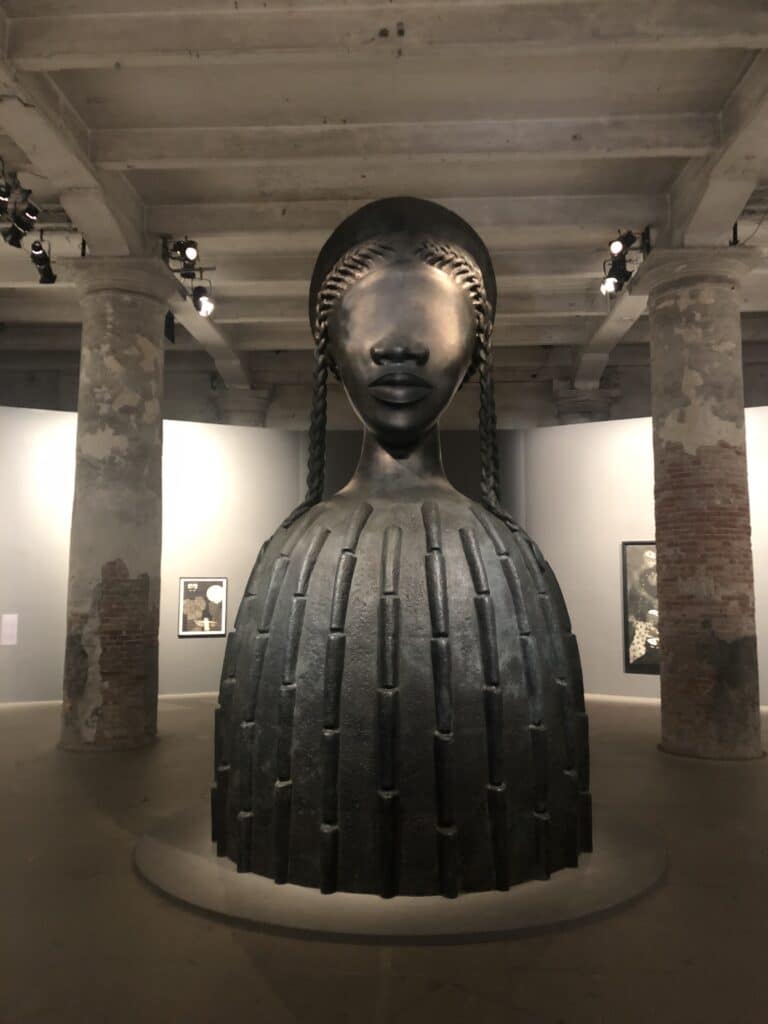
The Milk Of Dreams reminds me of the imperative and power of art to ignite vision and provoke change. Here, we see life forms transform and new relationships forged between human, non-human and technology.
…”a magical world where life is constantly re-envisioned through the prism of the imagination, and where everyone can change, be transformed, become something or someone else.”
Curator, Cecilia Alemani, describing the book “The Milk of Dreams” by Leonora Carrington (1917–2011)
There are three themes or frames;
- The representation of bodies and their metamorphoses
- The relationship between individuals and technologies
- The connection between bodies and earth
I engage in paintings, installations, sculpture, video and text reels which resuscitate ancient anthropology, tribal symbols and artifacts, alongside change-making movements in art, often lead by women sidelined by the patriarchy of their time.
Rising to the 12 metre high ceiling and transcending human scale, are the huge ceramic vessels figures crafted by Gabriel Chaile, a self-proclaimed “visual anthropologist”.
The tallest is half chimney, half tale; a hybrid being in the middle of a transformation. Four stubby vessels on funny tripod-like legs surround their leader, facing outwards in defense of an inner shared territory.
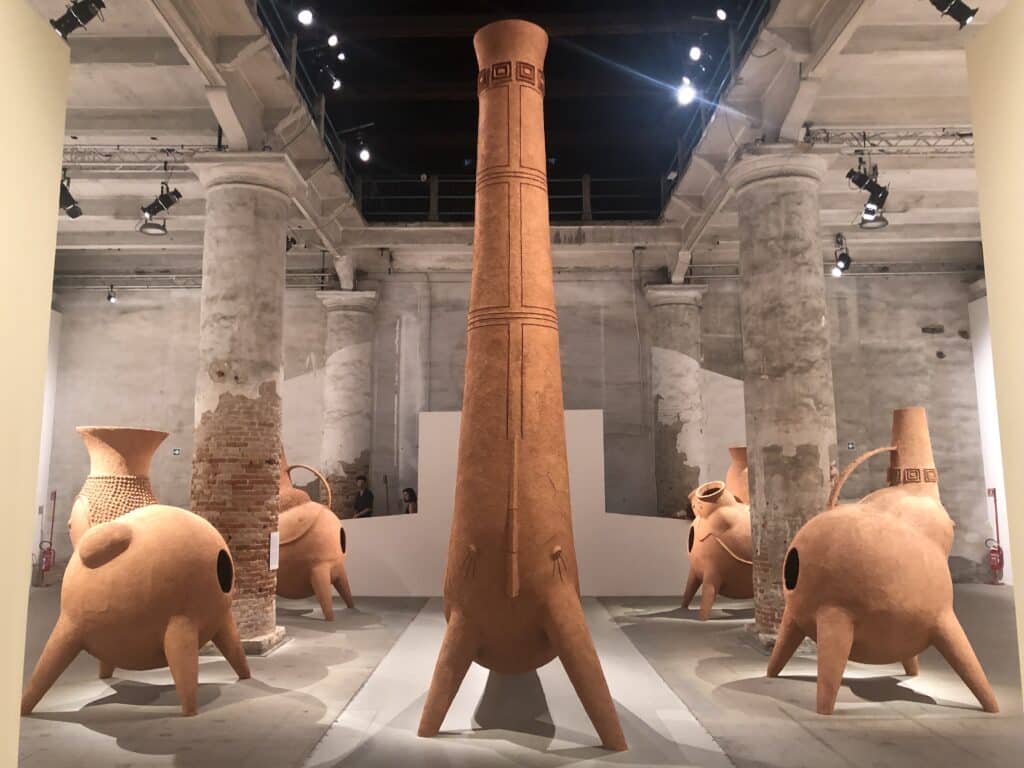
Chaile and others in the exhibition are exploring the idea of the ancient or eternal vessel; containers and carriers of life; crafted in ancient tribes as utensils; pots, barrels etc., then being witness to change and carrying life through the ages as they pass through many hands.
Exploring the theme of Metamorphosis, Felipe Baeza paints and carves bodies; half-human, half-flora onto canvases pasted in thick layers of multi-materials then scraped and reapplied in subsequent layers; sand, ink, egg tempera, twine, and glitter. The burst of foliage from human heads is a stark reminder of the inseparable dynamic between the organs of human and the organs of non-human species.
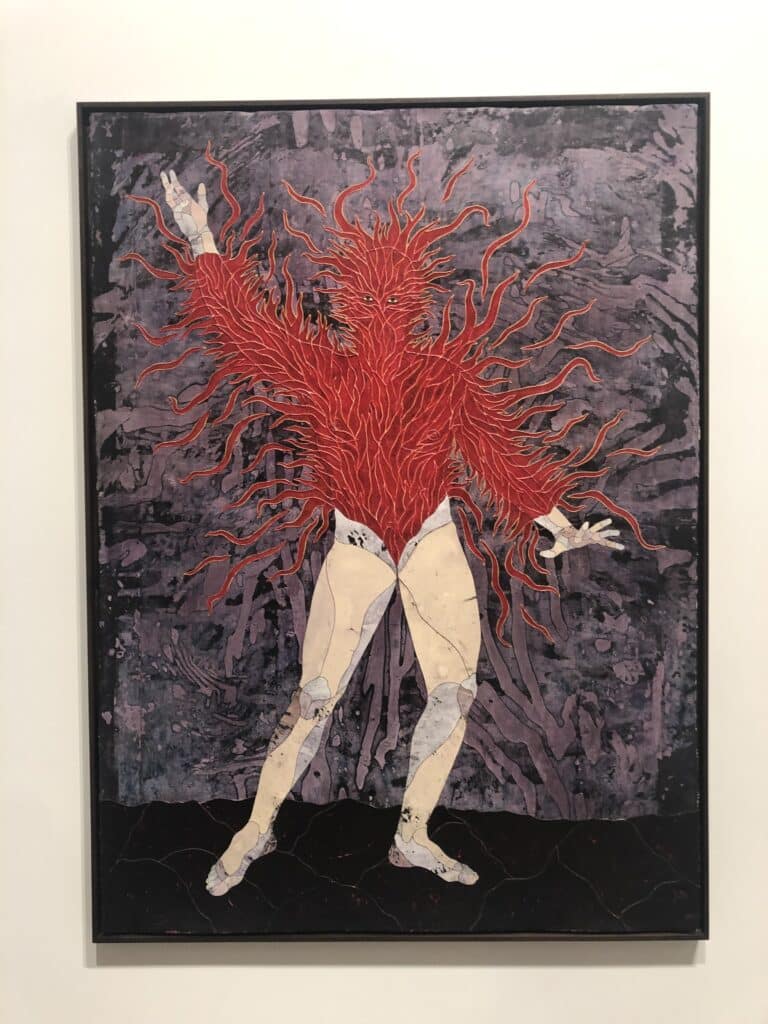
The Sentinels of Change by Sandra Mujinga are seriously sinister beings. They command a new order and create a haunting atmosphere in their particular section of the warehouse, fully bathed in a putrid, unnatural green light. Their bodies of matted drapes and hanging threads belong to an underworld. Perhaps these figures were once like us, now transformed to a life form after life, and entering a subsequent cycle of prolonged decay.
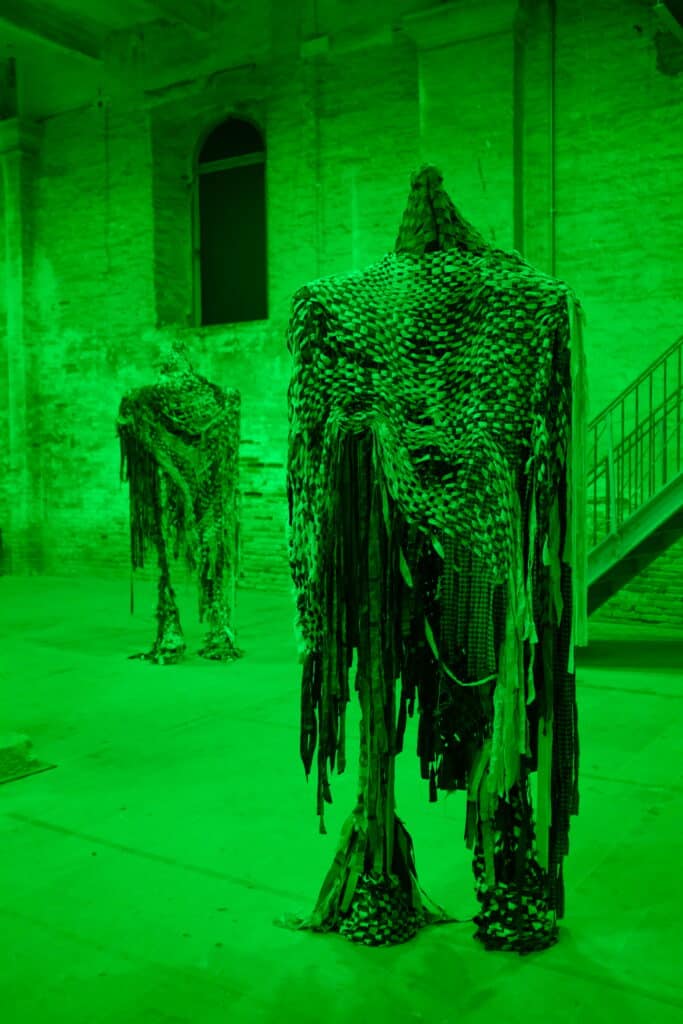
Still vivid in my mind are the hyper-colour, hyper-polished sculptures of the artist, Teresa Solar which leap or hang from dull and heavy rocks, appearing as superior beings. Their presence is weighty yet ephemeral, full-bodied, but at the same time light and floating as they never quite touch the ground.
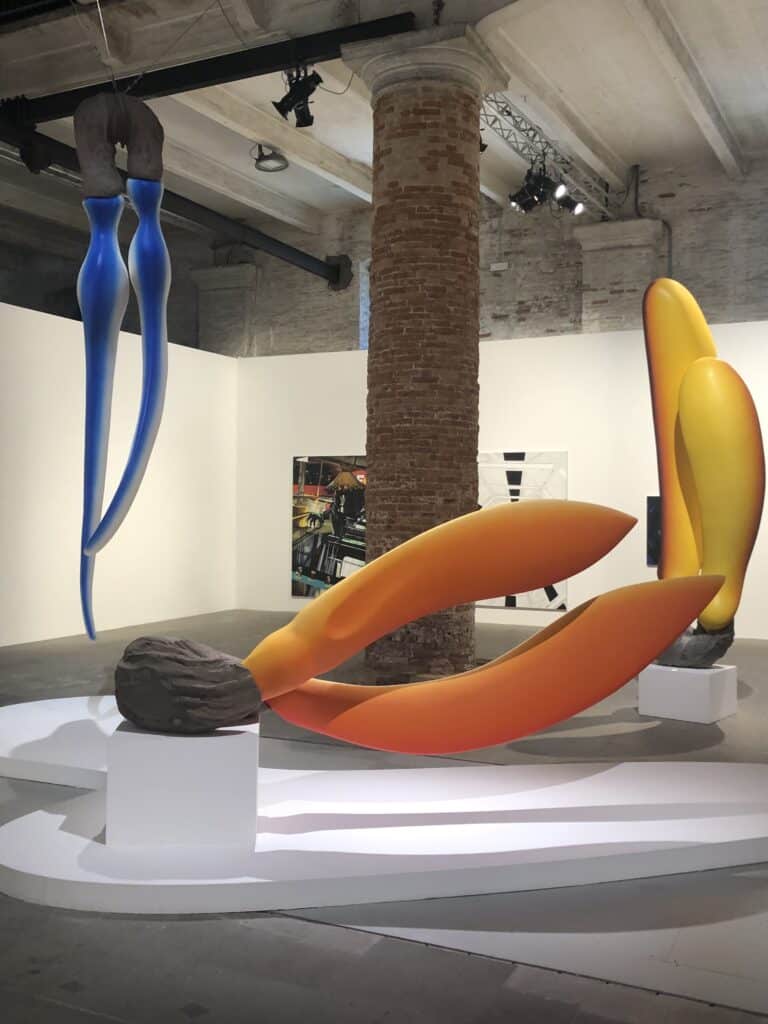
In the same ilk, the works of artist Marguerite Humeau appear to take their origin in known animal organs, but then project into dynamic new forms of flesh and bone. The Dancers. Two Marine Mammals takes its origin in familiar human and animal movements, but then the thrusts upwards and outwards create new wings, ribs and muscles which belong to other forms of being, carrying unfamiliar life forces.
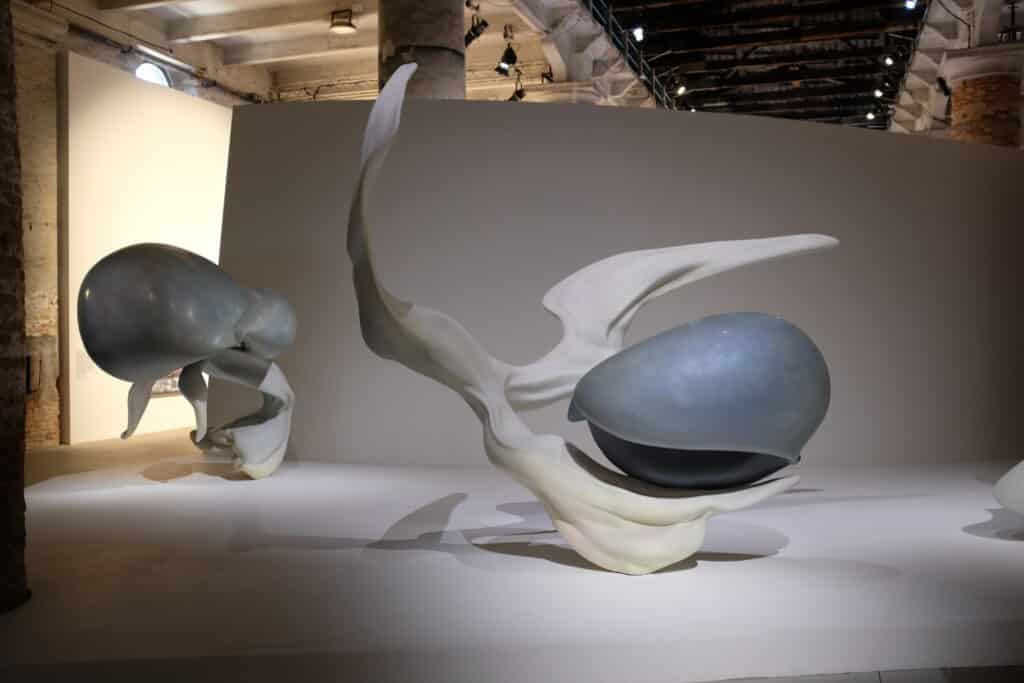
The final theme I would like to share is that of human convergence with technology. In the work, Toy Prototype, South Korean artist, Geumhyung Jeong has strung a diverse collection of technological components and mannequin human body parts across a huge tabletop. These are displayed as both single pieces and connected, hybrid machines, with tangled exposed wires, in the first stages of operation; hence the name prototype.
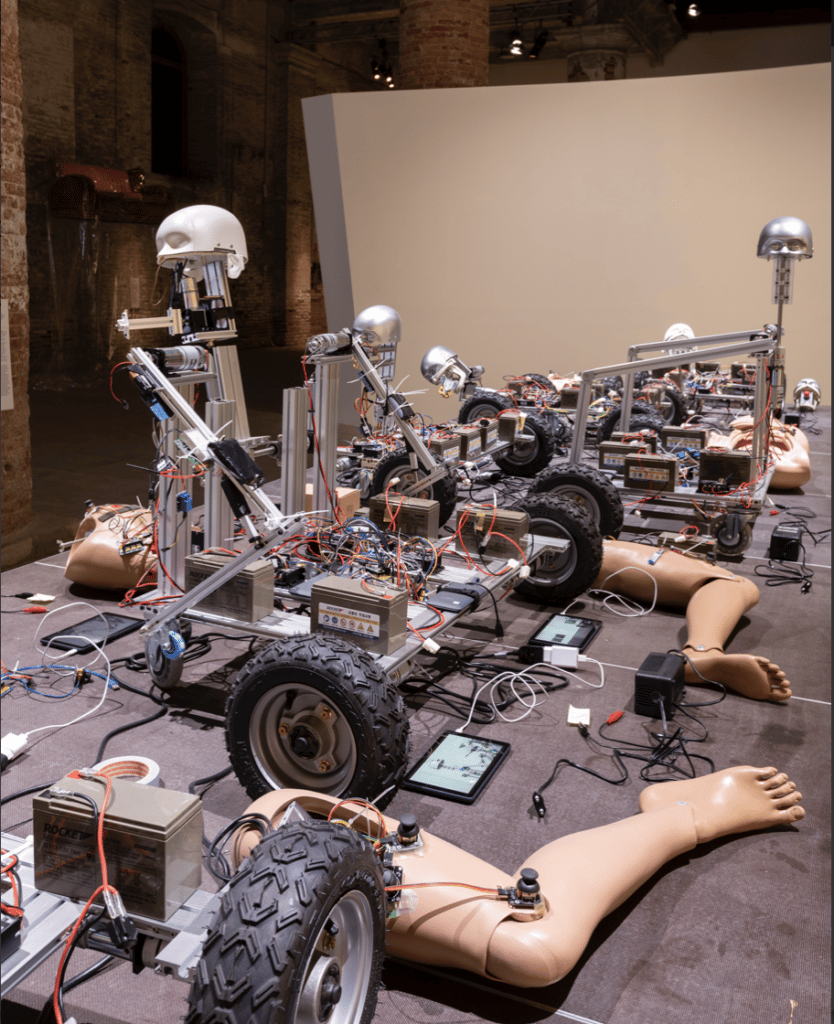
Summary
The Milk Of Dreams connects us to places and bodies outside ourselves. We are given access to other possibilities beyond our fixed beliefs and mindsets.
It seems I have been underestimating the power of art to tell us both our own histories and unseen versions of our present and future. Art and artists lead new directions not only as cultural inspiration but helping to reorder and restructure society itself.
Within The Milk Of Dreams, the role and action of modern humanity is put into question and the dominance we assume to have over nature is upturned. The work of humankind is no stronger than that of other human systems and spirits.
Without judging the cause and effects of human destruction, the artists of The Milk Of Dreams open up a wider context; connecting us to streams which are both ancient and alien, elevating us to places which are enchanted, seductive and alive; the healthy, mixed lives of the multi-species.
